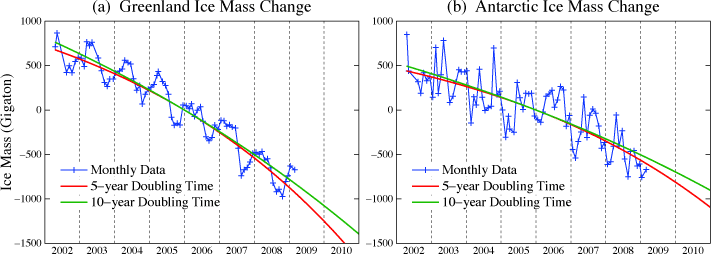COMMENT 7 March 2016
Northern hemisphere temperature breaches a terrifying milestoneWarming appears to have gone into overdrive, with the northern hemisphere going 2°C above pre-industrial temperatures for the first time, says Eric Holthaus
Arctic scene
Unusually warm
Frank Olsen/Getty
Preliminary February and early March temperatures are in, and it’s now abundantly clear: warming is going into overdrive.
As of 3 March, it appears that average temperatures across the northern hemisphere breached 2°C above pre-industrial levels for the first time in recorded history, and probably the first time since human civilisation began thousands of years ago.
The 2°C mark has long been held (somewhat arbitrarily) as the point above which climate change may begin to become “dangerous” to humanity. It has now arrived – though very briefly and only in the northern hemisphere – much more quickly than anticipated. This is a milestone moment for our species. Climate change deserves our greatest possible attention.
As for the planet as a whole, there are dozens of global temperature datasets, and usually I (and other climate journalists) wait until the official ones are released to announce a record-breaking month at the global level. But February’s global data is so extraordinary that there is no need to wait: it obliterated the all-time temperature record set only in January.
Using unofficial data and adjusting for different baseline temperatures, it appears that February was somewhere between 1.15°C and 1.4°C warmer than the long-term average, and about 0.2°C above January – making it the most above-average month ever measured. (Since the globe had already warmed by about 0.45°C above pre-industrial levels during the 1981-2010 baseline meteorologists commonly use, that amount has been added to the data.)
Stunning rise
Keep in mind that it took from the dawn of the industrial age until October 2015 to reach the first 1.0°C rise. That means we have come as much as an extra 0.4°C further in just the last five months. Even accounting for the margin of error associated with these preliminary datasets, that means it is virtually certain that February beat the record set in January for the most anomalously warm month for the entire globe ever recorded. That’s stunning.
It also means that for many parts of the northern hemisphere, there basically wasn’t a winter.
Parts of the Arctic were more than 16°C warmer than average for February, bringing them a few degrees above freezing, on par with typical June temperatures, in what is often the coldest month of the year.

 !
!


